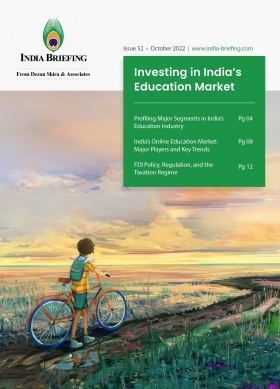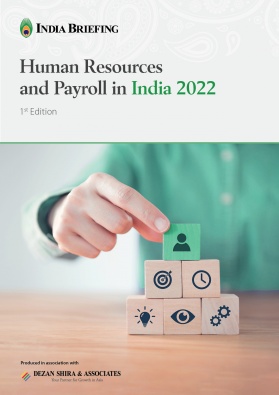Profiling Major Segments in India’s Education Industry
India’s education industry is among the largest in the world and plays a significant and remedial role in balancing the socio-economic fabric of the nation. This is why education is core to the Indian government’s masterplan to promote long-term economic growth.
India pipped the UK to become the fifth largest economy in the world during the last quarter of 2021. The last time this happened was pre-pandemic, in 2019. India also boasts of having the world’s largest population in the age cohort 5-24 years at 580 million. The country’s median age is around 28.4 years.
Put these together, and the automatic implication becomes that India is a huge market for the education industry. The overall Indian education market is projected to be worth US$225 billion by FY 2024-25, showing compound annual growth rate (CAGR) of 14 percent as per a 2021 report.
Key segments in India’s education industry
India has a vast formal education industry, with institutions established to service the educational needs of each age cohort, covering the preschool period, the K-12 school years, and higher education and research. E-learning is now also a key emerging segment.
Pre-school market
India’s pre-school market is highly fragmented and is poised to register incremental growth of US$957.86 million between 2021 and 2026 at a CAGR of 9.57 percent. For 2022, an industry report predicts growth at 6.40 percent.
The urban segment accounts for the most market share, while the rise of dual income households in tier-2 and tier-3 cities are creating high demand for pre-school care and learning facilities.
K-12 school market
India has the world’s second largest schooling system with over 1.5 million schools and nearly 250 million enrolments. In fact, the K-12 sub-segment constitutes more than 50 percent of the overall size of the growing education industry in India.
K-12 schools in India are broadly classified as government-owned (approx. 72 percent), private aided (privately owned and managed but receiving some form of government aid – approx. 5 percent) and private unaided (financed entirely privately – approx. 23 percent).
While there is a long-term trend of rising preference for private school education due to better infrastructure and education facilities, there are several top-performing government schools in the country.
There are various education boards in India for governing school education. These include the respective State Boards, the Central Board of Secondary Education (CBSE), which has the widest network of schools in the country, the Indian Certificate of Secondary Education (ICSE), which has schools across the country and focuses on more practical education, STEM subjects, etc., the National Institute of Open Schooling (NIOS), which facilitates flexible learning opportunities, and the privately run International Baccalaureate (IB) offered by the country’s international schools.
Higher education
India’s higher education system has the third largest enrolment after China and the United States. This while there is only a gross enrolment ratio (GER) of 27.1 percent (FY 2019-20). There were 38.5 million students enrolled in 2019-20 – 19.6 million male and 18.9 million female students.
The University Grants Commission (UGC) is the central regulator for India’s higher education institutions – establishing standards, coordinating policies and assessment, and providing grants. However, technical institutes are governed by the All India Council of Technical Education (AICTE) and respective councils established under applicable statutes for the regulation of higher education in specific fields. These include the Council of Architecture, Pharmacy Council of India, Indian Nursing Council, Medical Council of India, and Distance Education Council.
The UGC and AICTE regulates the entry and operation of foreign universities and institutions in India. A higher educational institution is categorized as a ‘deemed university’ if it operates for at least 10 years and satisfies certain criteria, which enables it to grant degrees.
As of June 2022, there were 1047 universities in India. In 2021, the UGC listed 453 state universities, 126 deemed universities, (status of autonomy granted by the Department of Higher Education), 54 central universities (established by the Department of Higher Education), and 410 private universities.
Moreover, India has 132 Institutes of National Importance, which is a status conferred by the government on top performing public Higher Education Institutions (HEIs). The government has released Institutions of Eminence guidelines to empower HEIs to support them becoming world-class teaching and research institutions.
It may be noted that the higher education industry in India can be broadly divided into two segments – regulated and unregulated. The regulated segment covers central, state, and private universities; private/professional colleges; and technical and research institutions. The unregulated segment covers online education, vocational training, finishing schools, professional development, and training and coaching classes – and offers considerable scope for private sector participation and foreign investment.
Announced in April 2022, the UGC has allowed certain higher education institutions to enter an MoU with foreign institutions to offer dual degrees, joint degrees, or twinning programs. To qualify, the Indian institution must figure among the top global 1,000 QS World University or Times Higher Education rankings.
Market outlook
India’s education industry has become increasingly competitive and highly diversified across all segments. Yet, there are scalable investment opportunities as quality access to education is not consistent throughout the country due to inadequate infrastructure and overwhelming demand.
Opportunities for foreign players are thus plenty across the industry, from providing services to the large schooling system, including management services, as well as academic publishing, supplementary online learning, and provisioning of educational supplies.
This is helped by the fact that education is a non-discretionary spend in India and regarded as a key enabler for upward mobility. This means that irrespective of economic downturns, household
budgets for education-related items stay prioritized.
Beyond the formal education system, rapid growth is expected in professional and skill development training and certification. India is a largely young population with a large labor force in need of skilling, upskilling, and reskilling. India needs to enhance the capabilities of its talent pool to achieve higher quality growth. Consequently, various skill development schemes and incentive measures are available to support this objective.
National Education Policy 2020
Going forward, the National Education Policy 2020 (NEP 2020) is likely to be a major disruptor. It will open opportunities for international players as the prevailing educational pedagogy looks to be transformed. For example, under NEP 2020, foreign universities will be permitted to set up campuses in the country.
The new curricular and pedagogical structure proposed by the NEP 2020 is ‘5+3+3+4’, which breaks down as:
- 5 years: pre-primary to 2nd standard
- 3 years: 3rd to 5th standard
- 3 years: 6th to 8th standard
- 4 years: 9th to 12th standard
This will replace the prevailing dominant standard of 10+2. The main objectives of the education policy reform are achieving 100 percent youth and adult literacy and 50 percent higher education GER from current 27 percent, use of technology, teacher training, regulatory reforms, internationalization of education, professional education, multidisciplinary approach, digital and open education, etc. As of now, only two Indian states have announced their plans to implement NEP 2020 – Karnataka and Madhya Pradesh. The states of Uttar Pradesh and Uttarakhand aim to gradually implement the policy in phases.
The NEP 2020 is designed to transform the education sector, making it more experiential and flexible. Indian universities are being encouraged to offer multidisciplinary and holistic education across sciences, social sciences, arts, humanities, and sports.
For more information on investment opportunities in India’s education and training industry and doing business in the Indian market, please contact us at india@dezshira.com.
About Us
India Briefing is produced by Dezan Shira & Associates. The firm assists foreign investors throughout Asia from offices across the world, including in Delhi and Mumbai. Readers may write to india@dezshira.com for more support on doing business in in India.
We also maintain offices or have alliance partners assisting foreign investors in Indonesia, Singapore, Vietnam, Philippines, Malaysia, Thailand, Italy, Germany, and the United States, in addition to practices in Bangladesh and Russia.
- Previous Article Investment Opportunities in India’s Transition to a Low-Carbon Economy
- Next Article Telecom Equipment Makers Meeting with the Government on December 3











